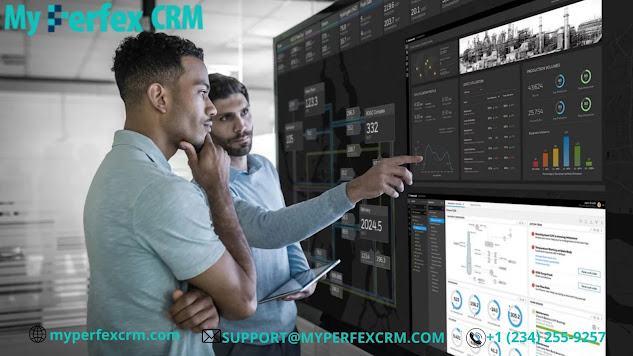Beginners Guide on how to manage Xero CRM Plugin.
As a CRM developer, I've learned a lot of useful
knowledge about planning, keeping up with, and conveying the Xero CRM plugin. I comprehend that there is a great deal of material accessible
on making your first module. Regardless of whether you plan to make a module
yourself, this will better comprehend the Xero CRM module's specialized angles.
What
is the Functionality of the Xero CRM Plugin?
The essential thought is that each time you do an
action in CRM, an occasion execution pipeline process is running in the
background. Whenever a particular activity happens, a module is just a piece of
code that requests that CRM perform something extra that it doesn't as of now
do.
Along these lines, to additionally explain this idea,
how about we check a straightforward model out.
·
How about we perform something we've all
done in CRM whenever you've signed in and finished a straightforward advance.
·
Make another client account. A structure
is made in the most recent form when you begin developing it.
·
You're collaborating with the UI, yet the
module hasn't done anything until you hit the save button.
Events
Whenever you press the save button, an occasion is set
off, illuminating Perfex CRM that
you saved another record. The module code is executed in the accompanying way.
For occasions and record types in CRM, you register custom module rationale.
CRM will then tune in for every one of these occasions and execute your code
close by the default cycle you've appointed to it.
The following are a couple of occasions of CRM's most
normal events:
·
Save - This activity saves the record.
·
Make another record with this order.
·
Refreshes - Additions, and erasures to
existing records
·
The task is the most common way of
relegating a new or existing structure.
·
Erase - Get freed of a current record.
What
is the CRM Event Execution Pipeline, and how can it work with CRM Xero Modules?
The CRM Event Execution Pipeline decides when CRM's
default unaltered code runs and when your custom module code runs. Basically,
the pipeline guarantees that the framework's fundamental capacities don't cover
during this interaction.
Stages
You indicate CRM not exactly what occasions your
module code ought to run in yet in addition what steps your custom module ought
to take. Permit me to make sense of. Whenever you click the Save button on the
record made in CRM. Also, there will be three fundamental stages to handle the
occasion before I complete the saving system.
Pipeline
for CRM occasion execution
The initial step is the pre-confirmation stage, in
which CRM twofold makes sure that each of the information in the record is
right prior to continuing on. Assuming you want to perform further approval,
this progression will benefit your module. The pre-occasion/pre-activity stage
is the second. It is the last advance before the information you've entered on
a record is focused on the data set. It is likewise the progression where you
will probably wish to report any progressions to the qualities prior to placing
the information in CRM.
For
what reason is it Necessary to Create a Xero CRM Plugin?
To start building custom modules, you can utilize any
adaptation of Visual Studio. You can either use VS Code or download the open
rendition of Visual Studio. You're great if your favored module permits you to
assemble the code.
What's
the Difference Between Using a Synchronize Xero CRM Plugin?
You'll pick to run in a state of harmony assuming that
you're constructing a module and believe the client should be told during the
interaction. It demonstrates that the client will be informed. When the module
is done or on the other hand on the off chance that there is an issue on the
screen. Be that as it may, you might wish to execute your module routinely. So
and that implies it will begin and stop behind the scenes. Running the module
this way won't keep the client from playing out their ordinary errands.
Furthermore, any blunders will be noticeable behind the scenes and won't be
apparent to the client.
Would
it be advisable for me to utilize an early or late restricting code system
while composing my module?
It is far from being obviously true, and I've utilized
both, and each has advantages and disadvantages. Since you could change your
psyche later, how about we get into for what reason you'd pick one over the
other.
Code
for the Initial Binding Plugin
At the point when you utilize the underlying
restricting system, deciding the exact kind of property you expect for a given
record type is altogether more straightforward. It can help accelerate
advancement, particularly for those colleagues new to the many kinds of CRM
information and CRM object points of interest. The fundamental risk of taking
the primary bound course I would say is that your Xero CRM module will become
swollen or overstated because of the inherent client classes that make
associations.
·
It allows you to secure the entirety of
your confirmation and IntelliSense help early.
·
In huge CRM Xero modules with numerous
custom associations, I generally go with a late-restricting methodology for
module advancement.
Last
Word
Assuming that you utilize a late-bound technique,
you'll have to find out about the kind of record and information you're working
inside your modules, however it'll be somewhat quicker, and you'll have the
option to on the off chance that you have a great deal of Xero CRM module.




very nice blog this will be helpful for me, thank you guys for posting this kind of information also read stripe module
ReplyDeletevery nice blog this will be helpful for me, thank you guys for posting this kind of information also read perfex quickbooks
ReplyDelete